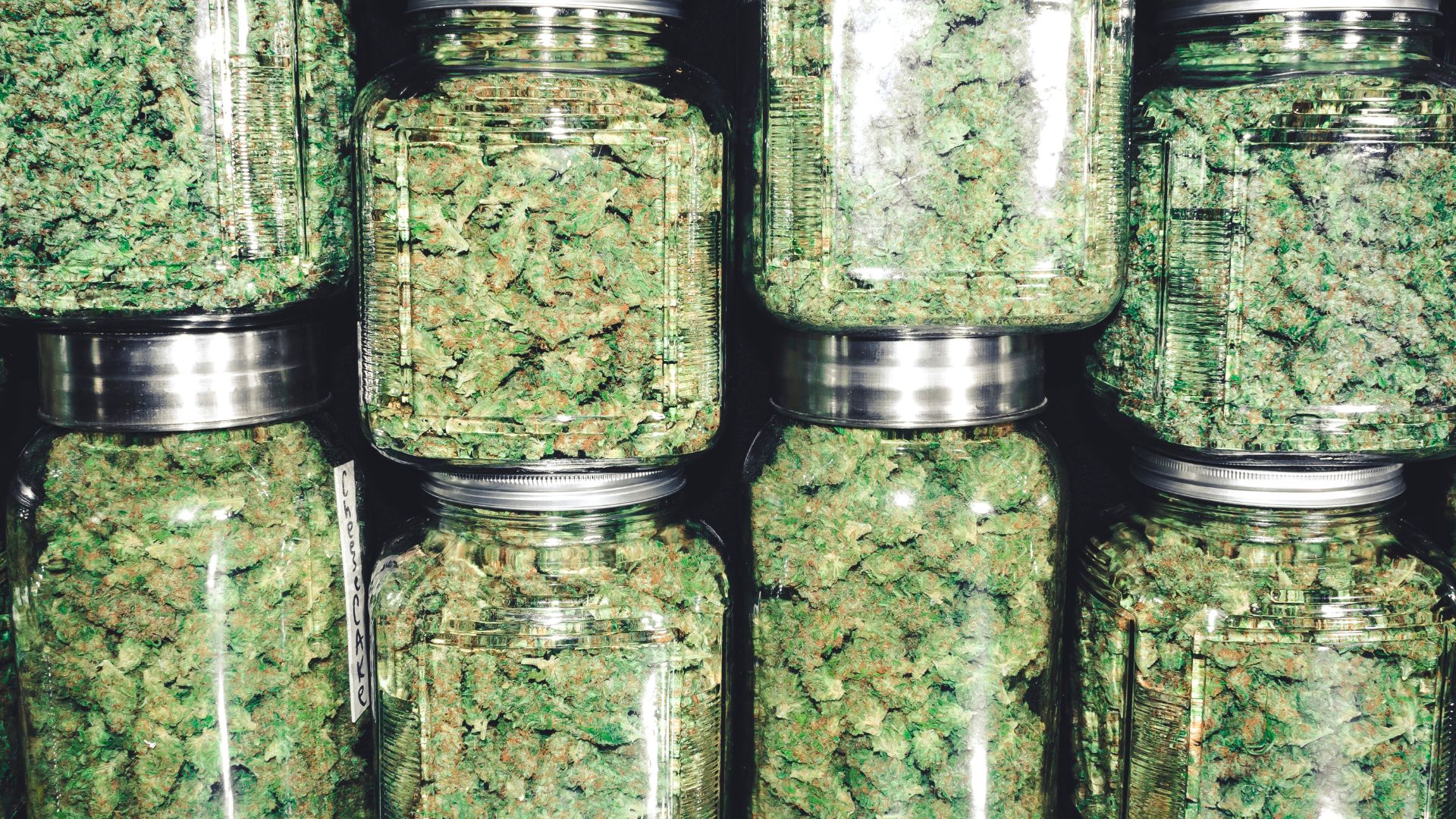If you’ve been to a dispensary or read anything about weed online, you’ve probably heard the term “strain.” What, exactly, is a strain? How do strains affect your cannabis experience? Let’s explore with this handy marijuana strain guide.
What are strains, and where do they come from?
Strains are a loose categorization term for different varietals of cannabis, but it’s the one that’s most easily understood. Other terms like “cultivars” and “chemovars” are more scientifically accurate, but not a lot of folks know what those terms mean.
To understand how we got here, let’s go back to the beginning. Cannabis, like all plants, has different varieties, called varietals. These differences appear as the colors of the flowers, the aroma of the buds, and (allegedly) the effects of the flower, among other factors.
We call these differences “strains,” and there are hundreds of them, just like there are many varietals of roses or tomatoes. Cultivators make different strains by breeding existing plant lineages together, typically to emphasize a desirable effect, compound, or plant trait.
There is no set standard for what constitutes a strain. There’s no blueprint for how OG Kush becomes OG Kush and no naming conventions to follow — breeders can theoretically name a plant whatever they want. On top of that, strain names may change based on what state you’re shopping in or if you’re on the West Coast instead of the East Coast. These differences can also change from harvest to harvest in the same strain based on the growing conditions.
How weed strains are bred
Strain selection is an art, not a science, and much of it depends on the goals of the cultivator.
Some strains are selected for their notoriety and consumer popularity, like Sour Diesel. Famous weed strains like these are expected to look and smell one way and create a certain experience. Most breeders don’t want to change too much about these strains because consumers want something specific.
Some breeders are interested in creating new strains, and they select particular parent strains for their potency, color, aroma, or trichome density. Others, like Cannatonic, are bred for certain cannabinoids and certain medical conditions — in this case, higher levels of CBD over THC.
Other breeds may seek out new genetics that are better suited for certain growing conditions. The cultivars that grow well in California and Washington are very different from the ones suited for the growing season here in the Northeast.
Indica vs. sativa vs. hybrid strains
Indica and sativa are two very commonly used terms, but are you using them correctly?
Let’s get scientific for a moment. Indica and sativa are biological terms that classify two types of cannabis plants: cannabis sativa and cannabis indica. These two plants are both cannabis plants, but they have different appearances. Indica plants are shorter and bushier, while sativa plants can tower overhead with thinner leaves.
These terms are important because there are three types of cannabis plants: indica, sativa, and ruderalis. But they are misused because the “indica and sativa” division has little to do with the chemical composition of your plant (or product). These biology terms describe differences in the growing cycles and appearance of the plant, not of the cannabinoid or terpene makeup.
Decades ago, before commercial cannabis cultivation began and landrace strains were more common, indica and sativa plants may have had stronger differences in their cannabinoids and terpenes, with indica leaning sedating and sativa leaning energizing. But today, cannabis plants are so interbred, crossbred, and heavily manipulated that there’s not a big difference between the two.
Most plants and products on the market today are actually a hybrid — a combination of indica and sativa. Some hybrids are still dominant in one plant type or the other, but for the most part, it’s all cannabis.
Indica strain examples at Queen City
- Bubba Fett is a cross between the hybrid strain Star Dawg and the indica strain Bubba Kush.
- Butterstuff is bred from a cross of Velvet Glove and Peanut Butter Breath, creating effects associated with indica strains including relaxation and sleepiness.
Sativa strain examples at Queen City
- Super Lemon Haze is a cross between Lemon Skunk and Super Silver Haze known for cerebral and social effects.
- Jupiter is bred as a cross of the hybrid strains Chem 4 and Goliath. Its sativa-like effects include euphoria and inspiration.
Hybrid strain examples at Queen City
- Lemon Pound Cake joins the sativa-dominant hybrid Lemon Skunk with the hybrid strain Cheese GMO.
- Afternoon Delight is a strain bred from hybrid GMO and hybrid Trophy Wife.
- Banoreoz is derived from the hybrid Oreoz strain and the indica Dual OG strain.
What about landrace strains?
Landrace strains are how cannabis got started. A landrace strain is a purely indica or purely sativa plant that is native to the area where it was discovered. Landrace strains are like heirloom seeds: a certain varietal of plant that was passed from generation to generation because of its desirable traits.
Landrace strains are celebrated for their unique genetic profile and specific effects, but they’re quite rare today because they’ve been used for breeding for generations.
Sativa: Durban Poison
This pure sativa strain originated in South Africa and took the U.S. cannabis scene by storm in the late 1970s when it was brought stateside because it had a flowering time of just 60 days.
Indica: Hindu Kush
This pure indica strain hails from a mountain for which it is named in Afghanistan and Pakistan, and it came to the U.S. in the 1960s. Hindu Kush is the mother of the entire “Kush” lineage that can be found in shops across the country today, including at Queen City.
Which is better, indica or sativa?
This is mostly a matter of personal experience. On one hand, you could say that indica is better if you’re looking for calming effects and sativa is better if you’re looking for energy. In reality, though, some strains labeled as indica are actually energizing, and some labeled as sativa are relaxing. Try a handful each of indica and sativa strains to see which you prefer — you might like some of each.
Do you feel more high with indica or sativa?
Often, sativa strains are higher in THC content and more associated with cerebral effects than indica, so you might feel higher with them. Again, though, it’s all kind of a toss-up since, ultimately, most plants labeled sativa or indica are actually hybrids. The advice to try some strains and see how they make you feel applies here too.
Where do strains get their names?
How strains get their name is the million-dollar question in cultivation – and the answer is: it’s incredibly varied.
Some cannabis strains are named for their parent lineage. For example, LA Kush Cake was named after its parent strains, Wedding Cake and Kush Mints. Others, like Green Crack, had a different name originally and were renamed by their fans. Still, others may be named because of the color of their flowers, the density of trichomes, the scent of the plant, the flavor of the bud, as a homage to someone, or just because the breeder liked a certain name.
In short, how strains get their name is random.
How many weed strains are there?
Current estimates say there are more than 800 different cultivars and counting, although it’s tough to know exactly how many cannabis strains are out in the world right now. New strains are created regularly and some of the same strains have different names, making it difficult to keep a precise count. Suffice it to say: there are a lot of options.
What cannabis strains should you know?
It’s up to you — try out whatever strains are known for effects that suit your needs! If you’re unsure where to start, Granddaddy Purple and Green Crack are super popular. At Queen City, you can also find Super Sour Diesel products derived from the legendary Sour Diesel strain, as well as Sunset Sherbert products that originate from the beloved Girl Scout Cookies strain.
How to select the right strain for you
How do you navigate the seas of strains available to find one (or multiple) that work for you? By asking yourself the following questions:
- How do you want to feel? Are you looking for relaxation or motivated to clean the house? Are you settling in for a movie night or headed out with friends? Do you need a burst of euphoria or help to settle an anxious mind? The multitude of cannabis strains available works in your favor; there’s a strain for every occasion.
- How do you want to consume? Not every strain is available everywhere, or in every form. Your options for cannabis products at any given dispensary will be limited by consumption preference. Do you want to smoke a joint, take an edible, or buy a vape? Do you need to be discreet, or can you smell like weed smoke?
- What have you liked before? There’s a saying in the cannabis world: the nose knows. You’re more likely to have a positive experience on strains that smell appealing to you versus strains that don’t. Consider what you’ve tried in the past and what you want to try.
- What’s your tolerance? If you’ve been smoking for years, a 1g pre-roll is probably a single serve or enough for two people. If you’re a social consumer, that much weed at once is best shared among a few people.
It’s a cannabis jungle out there
Navigating the multitude of cannabis strains available in dispensaries today can be overwhelming for a seasoned stoner, let alone someone trying weed for the first time. If you need help navigating all of the strain options on the menu, just ask the budtenders at Queen City! We’re here to help and get you on your way.


